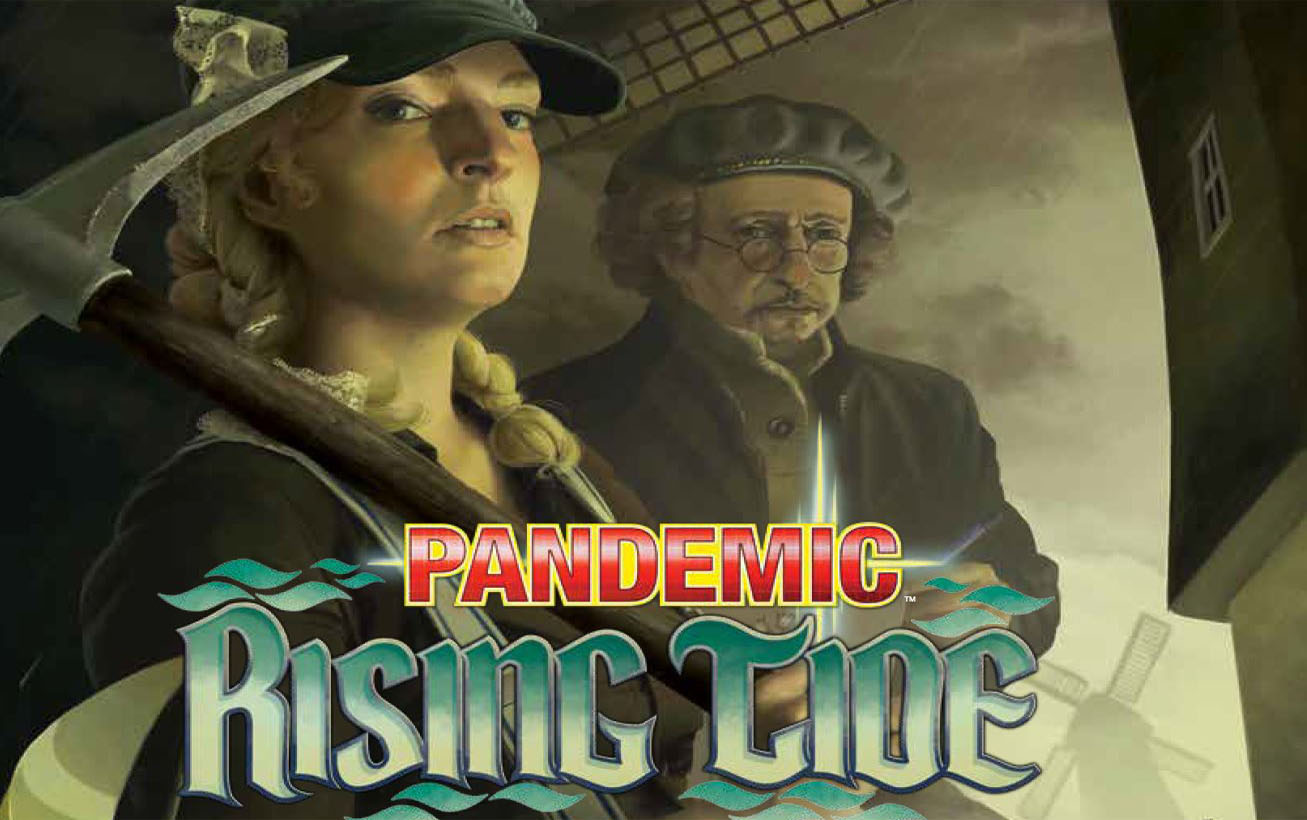
In Pandemic: Rising Tide, you and your fellow players are Dutch civil officials trying to keep the ever-encroaching waters at bay. Can you control the water flow long enough to build the modern hydraulic structures that will help you defend against the flood?
Pandemic: Rising Tide is a cooperative game. The players all win or lose together. The goal is to construct 4 modern hydraulic structures to defend against floods. The players lose if:
- not enough water cubes are left when needed (the flooding is too widespread), or,
- not enough Player cards are left when needed (your team runs out of time).
Each player has a specific role with special abilities to improve your team's chances.
Once you are familiar with the game, alternative objectives are included for greater variety and challenge.
Components
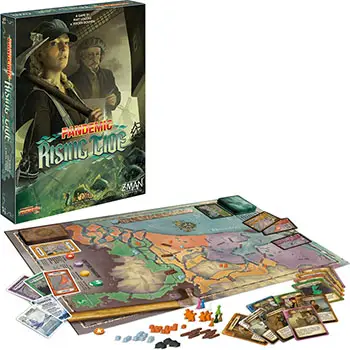
- 7 Pawns and 7 Role Cards
- 78 Player Cards
- 56 Dike Failure Cards
- 4 Hydraulic Structure Tokens
- 1 Sea Level Marker
- 1 Reminder Marker
- 5 Reference Cards
- 1 Population Loss/Setup Summary Card
- 50 Dikes
- 5 Pumping Stations
- 12 Objective Cards
- 36 Water Cubes
- 36 Population Cubes
- 5 Ports
- 1 Board
- Instructions
Setup
-
Set out the Board and Pieces
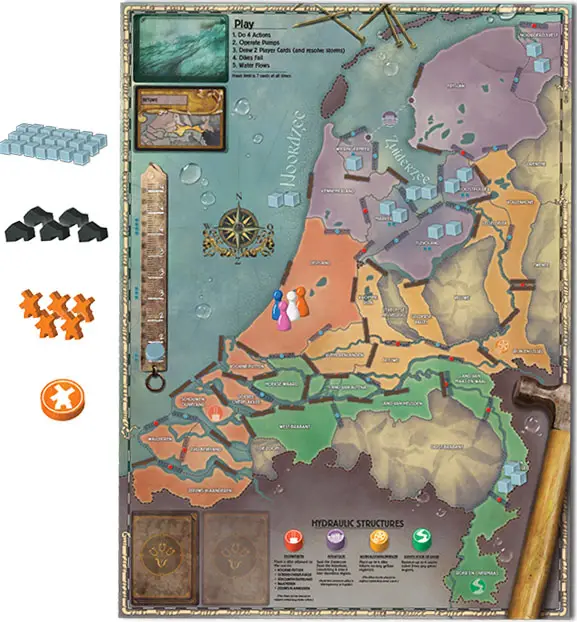
Place the board within easy reach of all players. Place the 5 ports, 5 pumping stations, and 36 water cubes nearby. Place the 4 hydraulic structure tokens on the board as shown.
Place 1 dike on the board in each of the red dike locations
 . You will use all 5 dikes. Note: Two dike locations begin with 2 dikes.
. You will use all 5 dikes. Note: Two dike locations begin with 2 dikes.Return all 12 Objective cards, all 36 population cubes, and the Population Loss card to the box. These components are used in a game variant.
-
Place sea level marker and initial water cubes on the board
Place the Sea Level marker on the lowest "2" space of the Sea Level track, then place 2 water cubes in both the Noordzee and Zuiderzee. These are seas. Water cubes are used to determine how much water flows into the regions (land spaces) of the board, and the number of water cubes in the seas increases as the sea level rises.
Place the indicated number of water cubes into the following regions (all bordering the Zuiderzee):
- 1 cube in Wieringermeer
- 2 cubes in Markerwaard
- 2 cubes in Flevoland
- 2 cubes in Noordoostpolder
Note: These regions have 1 or 2
 below their names as setup reminders.
below their names as setup reminders. -
Degrade Regions
Shuffle the Dike Failure cards. Flip over 3 of them. For each card, degrade the matching region 3 times. To degrade a region, remove a dike from it. Dikes bordering two regions belong to both of those regions.
If there are multiple dikes in the region, collectively decide which 1 to remove. If there is no dike in the region, add 1 water cube instead, to a maximum of 3 water cubes in a region. During setup only, attempting to place more than 3 water cubes in a region has no effect.
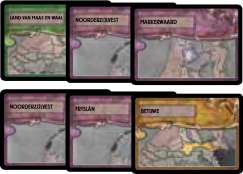
Flip over 3 more Dike Failure cards. For each card, d
Flip over 3 more Dike Failure cards. For each card, degrade its region 1 time.
Place these 9 cards faceup on the Dike Failure discard pile. The other Dike Failure cards form the Dike Failure deck.
Note: Unlike in the original Pandemic, there are two cards for each region in the Dike Failure deck.
-
Give each player cards and a pawn, and determine first player
Give each player a Reference card. Shuffle the Role cards and deal 1 faceup to each player, along with its matching pawn. All players place their pawns in Delfland. Return the remaining Reference cards, Role cards, and pawns to the box.
Set aside the Storm cards until Step 5.
Shuffle the Event cards facedown and randomly set aside the number of Event cards shown in the table below.
Add these Events to the Region cards. Return the remaining Event cards to the box without looking at them.
Shuffle the Player cards (Regions and Events). Deal cards, faceup, to players to form their initial hands as follows:
# of players Events in Deck Initial Hand 2 4 4 3 5 3 4 6 2 5 8 2 Players keep their cards faceup on the table. The player with the Region card listing the shortest "Primary Defense Line" is the first player.
-
Prepare the Player Deck
Choose the game's difficulty level by using either 6, 7, or 8 Storm cards, for an Introductory, Standard, or Heroic game. Remove any unused Storm cards from the game.
Note: This is 2 more than the number of Epidemic cards used in the original Pandemic!
Divide the remaining Player cards into facedown piles, as equal in size as you can, so that the number of piles matches the number of Storm cards you are using.
Shuffle 1 Storm card into each pile, facedown. Stack these piles to form the Player deck, placing smaller piles on the bottom.

Place the Reminder token next to the Player deck. (Later, after you build your first pumping station, you will place it on top of the Player deck as a reminder to do the "Operate Pumps" step each turn).
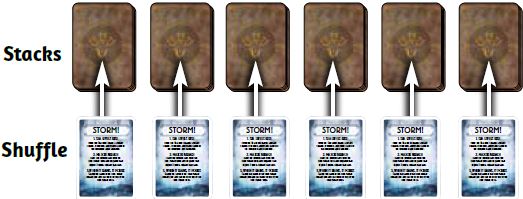
-
Stacks Resolve Initial Water Flow
Before the first player takes the first turn, resolve the inital water flow:.
Water cubes in regions and the 2 seas (Noordzee and Zuiderzee) can cause additional water to be added into adjacent regions. (You can imagine it flowing from regions with a lot of water into regions with less water).
Dikes on the board block this flow from happening, as do the high- elevation regions (such as Veluwe and Oost-Brabant) on the board.
To complete the setup, check every region by doing these steps in order:
-
For each region with 3 water cubes, add water cubes to each adjacent low-elevation region that is not protected from the first region by a dike, until each has at least 2 water cubes.
(Don't add water cubes to regions that already have 2 or 3 water cubes).
-
Then, for each region with 2 water cubes, add water cubes to each adjacent low-elevation region that is not protected from the first region by a dike, until each has at least 1 water cube.
(Don't add a water cube to regions that already have at least 1 water cube).
-
Game Play
Each player turn is divided into 5 steps:
- Do 4 Actions
- Operate Pumps
- Draw 2 Player Cards (and resolve storms)
- Dikes Fail
- Water Flows
After a player is done with the Water Flows step, the player on their left goes next.
Players should freely give each other advice, letting everyone offer opinions and ideas. However, the player whose turn it is decides what to do.
Your hand of cards can have Region and Event cards in it. Region cards are resources, used to complete objectives and do some actions. Events can generally be played at any time, including during another player's turn.
Do 4 Actions
You may do up to 4 actions each turn. Select any combination of the actions listed below. You may do the same action several times, each time counting as 1 action.
Your role's special abilities may change how an action is done. Some actions involve discarding a card from your hand; all discards go to the Player discard pile.
Movement Actions

Drive/ferry
Move to an adjacent low- or high-elevation region.

Sail
Discard a Region card to move to the region named on the card.

Charter Boat
Discard a Region card that matches your region to move to any region on the board.

Return to Port
Move to a region containing a port. (Your region does not need to have a port in it for you to do this).
Other Actions

Pump
Remove 1 water cube from your region, placing i1t. in the supply. 32..

Build Dike (if no water cubes present)
Place a dike from the supply in a dike location bordering your current region, provided your region has no water cubes in it. Each dike location may hold any number of dikes (stack them if necessary). If all dikes are in use, instead move a dike from any region to your region.
Note that some effects, such as Event cards or building hydraulic structures, allow you to ignore the restriction of not placing dikes if water cubes are present.

Build Pumping Station
Discard a Region card that matches your current region to place a pumping station from the supply in that region. If all pumping stations are in use, instead move a pumping station from any other region to your region. Each region may have only 1 pumping station.
Tip: Once you have a pumping station in play, we suggest you keep the Reminder marker on top of the Player deck to help you remember to do the Operate Pumps step each turn before drawing Player cards.
Pumping Stations automatically remove 1 water cube each turn during the Operate Pumps step.

Build Port
Discard a Region card that matches your current region to place a port from the supply in that region. If all ports are in use, instead move a port from any other region to your region. Each region may have only 1 port.
Players can move to ports with the Return to Port action. You do not need to be at a port to move to a port.

Share Resources
You can do this action in one of two ways:
- give a Region card that matches your current region to another player, or
- take a Region card that matches your current region from another player.
The other player must also be in your region. Both of you need to agree to do this.
If the player who receives the card now has more than 7 cards, that player must immediately discard a card or play an Event card.

Build Hydraulic Structure
In the region containing a hydraulic structure site (indicated by a circular icon that matches the icon on the hydraulic structure), discard 5 Region cards that match its color to place the Hydraulic Structure token on the site.
There are 4 hydraulic structures, each associated with 1 site (1 per region color).
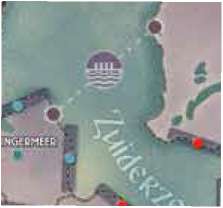
To build the Afsluitdijk hydraulic structure, a player must be in either the Wieringermeer or Frysldn region. This site is not a separate region.
Once built, each hydraulic structure provides either an immediate or continuing benefit.
Operate Pumps
For each pumping station in a region with at least 1 water cube, remove 1 water cube from 1 low-elevation region of your choice that the pumping station can trace a path to through 1 or more regions.
Each region in this path must contain a water cube and the path cannot cross seas or dikes. Place the removed water cube in the supply. If you have multiple pumping stations, operate them in any order.
Draw 2 Player Cards
Draw the top 2 cards together from the Player deck.

If, as you are about to draw, there are fewer than 2 cards left in the Player deck, the game ends and your team has lost! (Do not reshuffle the discard pile to form a new deck).
Storms
If your draw includes any Storm cards, immediately reveal them and do the following steps:
-
Sea Levels Rise: Move the Sea Level marker up 1 space on the Sea Level track. If the sea level rises (from 2 to 3 or from 3 to 4), add an additional water cube to each sea (the Noordzee and, initially, the Zuiderzee) so that the number of cubes matches the new sea level.
-
Major Breach: Draw the bottom card from the Dike Failure deck. Degrade this region 3 times (removing dikes first and adding water cubes if there are no dikes remaining).
If the region has no dikes left and 3 water cubes in it before you finish doing this, do not place any more cubes. Instead, a flood occurs once in this region (see "Floods" on page 8). Discard this card to the Dike Failure discard pile.

If you cannot place the number of water cubes actually needed on the board because there are not enough cubes left in the supply, the game ends and your team has lost!
This can occur when resolving a Storm card or during the Dikes Fail or Water Flows steps.
-
When It Rains, It Pours: Shuffle all the cards in the Dike Failure discard pile (including the card just drawn) and place them facedown on top of the Dike Failure deck.
It is rare but possible to draw 2 Storm cards at once. In that case, do all three steps above once and then again. The second time, the card drawn for the Major Breach will be the only Dike Failure card to "reshuffle", ending on top of the Dike Failure deck.
Event cards may be played after resolving the first Storm card and before resolving the second card.
After resolving Storm cards, return them to the box. Do not draw replacement cards.
Hand Limit
If you ever have more than 7 cards in hand (after first resolving any Storm cards you may have drawn), discard cards or play Events until you have 7 cards in hand.
Dikes Fail
Flip over, 1 at a time, as many Dike Failure cards from the top of the Dike Failure deck as the current sea level (indicated by the Sea Level track on the board). For each card, degrade its region 1 time and then discard it to the Dike Failure discard pile.
To degrade a region, remove a dike from it. If there are multiple dikes in the region, collectively decide which to remove. If there is no dike in the region, add 1 water cube instead.
If the region has no dikes and already has 3 water cubes, do not place a 4th cube. Instead, a flood occurs in the region (see "Floods" on page 8). Note that this is different from how you resolved this kind of situation during step 3 of setup.
Floods
When a flood occurs, place 1 water cube in each adjacent low-elevation region that is not protected from the flooding region by a dike bordering both regions.
If any of those regions already have 3 water cubes, do not place a 4th cube into those regions. Instead, in each of them, a chain reaction flood occurs after resolving the current region.
When a chain reaction flood occurs, place water cubes as above, except do not add a cube to regions that have already had a flood (or a chain reaction flood) as part of resolving the current Dike Failure card.
Important: Seas are not regions and cannot be subject to flooding or chain reaction flooding. They are also the only spaces that can ever have 4 water cubes (which can happen as the sea level rises).
Water Flows
As you did during the Initial Water Flow, check each region on the board to see if any water will flow from it.
If the seas have 4 water cubes, add water cubes (if necessary) to each adjacent region until those regions have at least 3 water cubes each.
Then, for each region with 3 water cubes, add water cubes (if necessary) to each adjacent region until they have at least 2 water cubes each.
Finally, for each region with 2 water cubes, add water cubes (if necessary) to each adjacent region until they have at least 1 water cube each.
When adding water cubes, remember that water will never flow across a dike or into a high-elevation region.
Player Cards
Place your cards faceup in front of you, for all players to see. Only Player cards count towards your hand limit. Your Role and Reference cards are not part of your hand.
Players may freely examine either discard pile at any time.
Event Cards
During a turn, any player may play Event cards. Playing an event is not an action. The player who plays an event decides how it is used. Most Event cards be played at any time, but they cannot be played in between drawing and resolving a card.
After playing an event, discard it to the Player discard pile.
Hydraulic Structures
 Afsluitdijk
Afsluitdijk
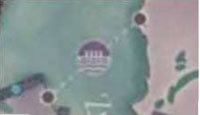
Discard 5 purple cards while in Wieringermeer or FryslQn to build this hydraulic structure.
The Afsluitdijk functions like a special dike, separating the Zuiderzee from the Noordzee.
When this structure is built, the Zuiderzee is no longer a sea. Treat it as a low-elevation region instead:
The number of water cubes in the Zuiderzee no longer rises with the sea level. (If there are 4 water cubes in the Zuiderzee when the structure is built, remove 1 water cube, to bring it to the maximum of 3 water cubes).
Players may now enter the Zuiderzee.
Players may pump water, build a pumping station, and build a port in the Zuiderzee (like any other low-elevation region).
Since it is now a low-elevation region, it is subject to floods (if another water cube would be added to it while it has 3 water cubes in it already).
The Afsluitdijk itself can never be removed due to a Dike Failure card.
 Deltawerken
Deltawerken
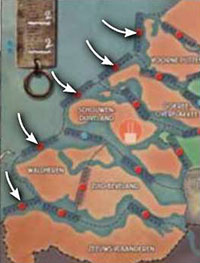
Discard 5 orange cards while in Schouwen-Duiveland to build this hydraulic structure.
When built, you may place a dike adjacent to the Noordzee in each of the following regions:
- Voorne-Putten
- Goeree-Overflakkee
- Schouwen-Duiveland
- Walcheren
- Zeeuws-Vlaanderen
 Normaliseringswerken
Normaliseringswerken

Discard 5 yellow cards while in Rijn en IJssel to build this hydraulic structure.
When built, place up to 4 dikes on yellow region(s).
 Ruimte Voor De Rivier
Ruimte Voor De Rivier

Discard 5 green cards while in Roer en Overmaas to build this hydraulic structure.
When built, remove up to 6 water cubes from any green regions.
Turn End
After doing the Water Flows step, your turn is over. The player on your left begins a turn.
End of the Game
The players win when all 4 hydraulic structures are built (regardless of how many water cubes are on the board).
The players lose in 2 ways:
- if they are unable to place the number of water cubes actually needed on the board, or
- if a player cannot draw 2 Player cards after the Do Actions (and Operate Pumps) step.
Players win the game if and when all the objectives in play are currently met.
Fine Points and Reminders
You cannot do the Build a Dike action when you are in a location containing water cubes.
For each Dike Failure card flipped over, remov e a dike from that region. If there are no dikes there, add a water cube to that region instead.
Remember to add a water cube t:o both seas (the Noordzee and Zuiderzee) when the sea level increases from 2 to 3 or from 3 to 4.
You cannot remove water cubes from the Zuiderzee (unless you build the Afsluitdjik) or the Noordzee.
You do not have to be in a region containing a port to use the Return to Port action.
You do not draw a replacement card after drawing a Storm card.
On your turn, when you do the Share Knowledge action, you may take a card from another player, if you are both in the region that matches the card you are taking.
The hand limit of 7 cards applies at all times, including after you receive a card from another player.
Delfland and Flevoland are not adjacent to each other; Markerwaard and Kromme Rijn are not adjacent to each other.
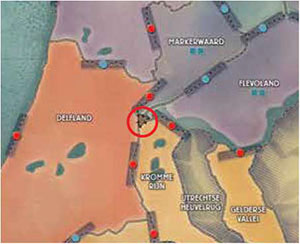
Variable Objectives
After you have had a chance to play the standard game a few times, try the Variable Objectives game for more variety and challenge.
In the Variable Objectives game, you will randomly select the objectives that you must complete in order to win the game (instead of always building the 4 hydraulic structures).
Additional Setup
During step 1 of setup, separate the 12 Objective cards into 4 piles (by color) and shuffle each pile. Draw 1 card from each pile and place these 4 objectives faceup near the board. Return the other 8 Objective cards to the box.
Read over the Objective cards in play, following any setup instructions on them. If there is at least 1 Population objective:
- Place the population cubes to the side of the board to form a supply.
- Place the Population Loss card on the board, above the hydraulic structures.
- Players can do the Expand Population action.
- Players lose if there are 5 or more population cubes on the Population Loss card.
Note: Players may build any of the 4 hydraulic structures from the standard game (to receive their benefits) even if this does not complete 1 of their objectives.
New Action: Expand Population
As an action, discard 1, 2, or 3 Region cards of the color matching your current region to place population cubes there equal to the number of cards discarded. Players cannot discard cards to add cubes if it would put the total number of cubes (population plus water) in the region over 3 cubes.
Population Loss
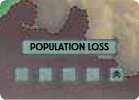
Each region may contain a total of 3 cubes (water plus population cubes).
Whenever a player would add water cubes to a region that would put the total number of cubes over 3, they must remove population cubes from the region to bring the total number back down to 3 cubes.
Place the population cubes removed in this way onto the Population Loss card.

Unacceptable Losses. If you ever place 5 or more population cubes onto the Population Loss card, too many people have perished, and you lose the game.
Difficulty
For an euen more challenging game, try starting with 5 or euen 6 objectiues. (Randomly select your objectiues, but make sure you do not use more than 2 objectiues of any 1 color). You can further tune the difficulty by uarying the number of Storm cards in the game. Here are some configurations to try:
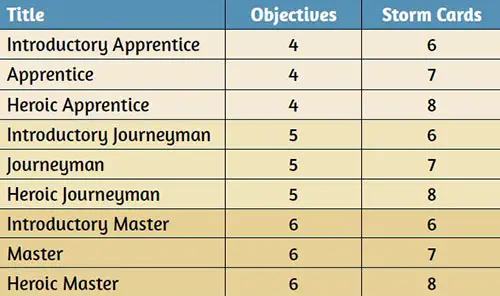
Roles
Each player has a role with special abilities to improve your team's chances.
-
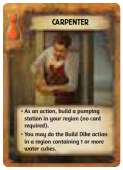
Carpenter
- As an action, build a pumping station in your region (no card required).
- You may do the Build Dike action in a region containing 1 or more water cubes.
-
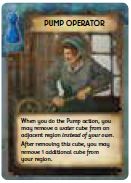
Pump Operator
When you do the Pump action, you may remove a water cube from an adjacent region instead of your own.
After removing this cube, you may remove 1 additional cube from your region.
-
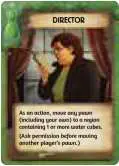
Director
As an action, move any pawn (including your own) to a region containing 1 or more water cubes. (Ask permission before moving another player's pawn).
-
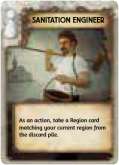
Sanitation Engineer
As an action, take a Region card matching your current region from the discard pile.
-
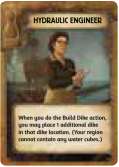
Hydraulic Engineer
When you do the Build Dike action, you may place 1 additional dike in that dike location.
(Your region cannot contain any water cubes).
-
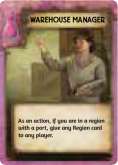
Warehouse Manager
As an action, if you are in a region with a port, give any Region card to any player.
-
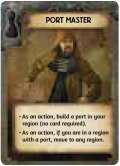
Port Master
As an action, build a port in your region (no card required).
As an action, if you are in a region with a port, move to any region.
Historical Notes
Pandemic: Rising Tide is inspired by historical events in the Netherlands from the second half of the 19th century until present day. The map is based on the Dutch "waterschappen" (water boards) model, which effectively is a parallel political system that deals only with water management.
There have been over a hundred of these, and thus, we took some artistic license when we selected the territories that make up these regions in order to make the game more playable.
We chose four main constructions as the hydraulic structures in this game. First, two iconic structures had to be included. The "Afsluitdijk", finished in 1932, turned the "Zuiderzee" inland sea into a fresh water lake.
One of the original plans was to turn the entire lake into reclaimed land; in the end only two polders were realized-the "Noordoostpolder" and "Flevoland". A third polder, the "Markerwaard", also included on the map, was nearly realized-but ultimately cancelled.
Another iconic structure is the "Deltawerken", finished in 1997, and heralded as one of the seven modern wonders of the world. They were built after the big flood of 1953 to protect the southwest and west of the country against the rising sea, especially during spring tides.
The last two structures we picked focused on managing the rivers: the "Normaliseringswerken" were a big series of efforts until the second half of the 20th century to normalize and straighten the river flows, both to better control the flow (and hence limit flooding) as well as to improve conditions for shipping.
The most recent project, "Ruimte voor de Rivier", started in 2007 after a number of river floods in the decade before. It reversed earlier decisions in again focusing on overflow areas- creating room for the river-instead of only building higher river dikes.
Continue Reading


